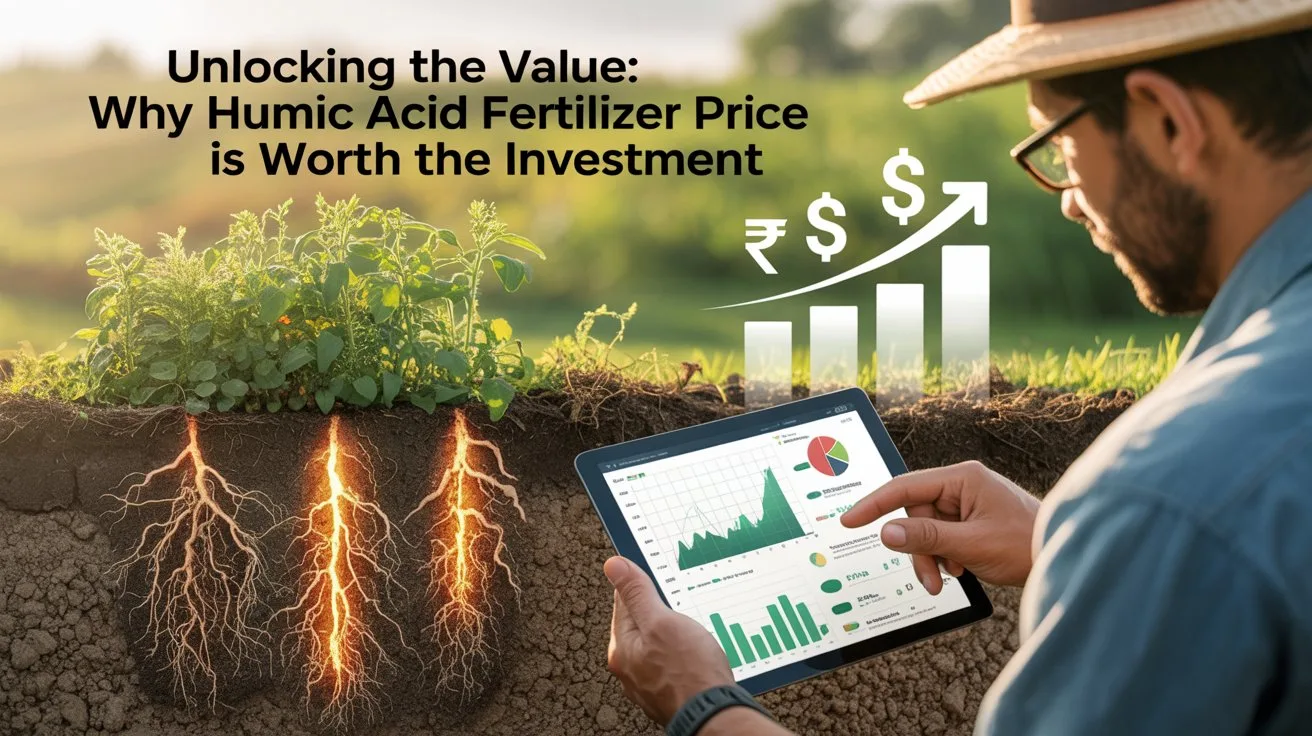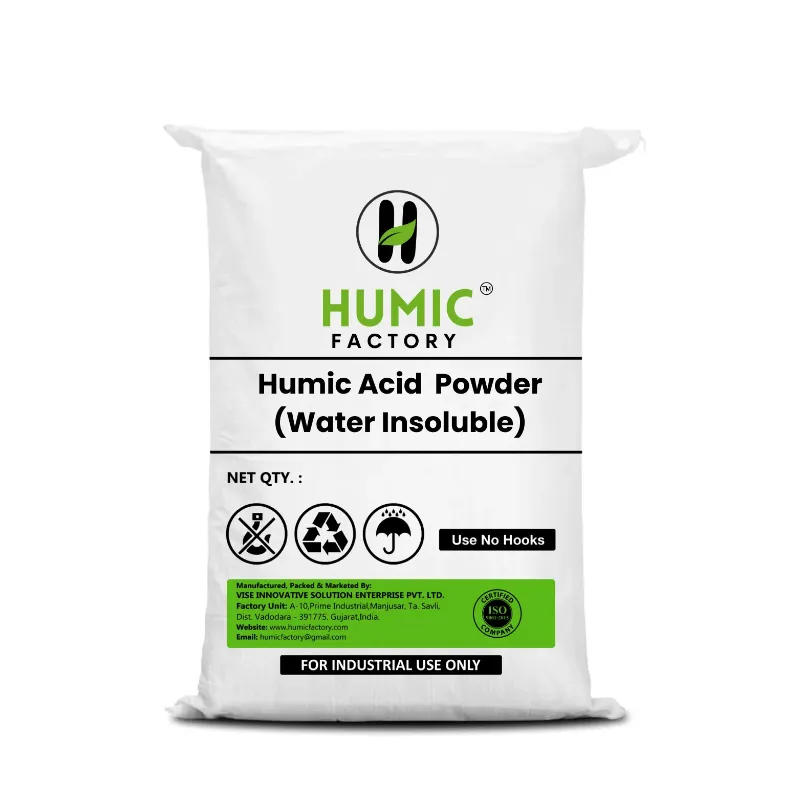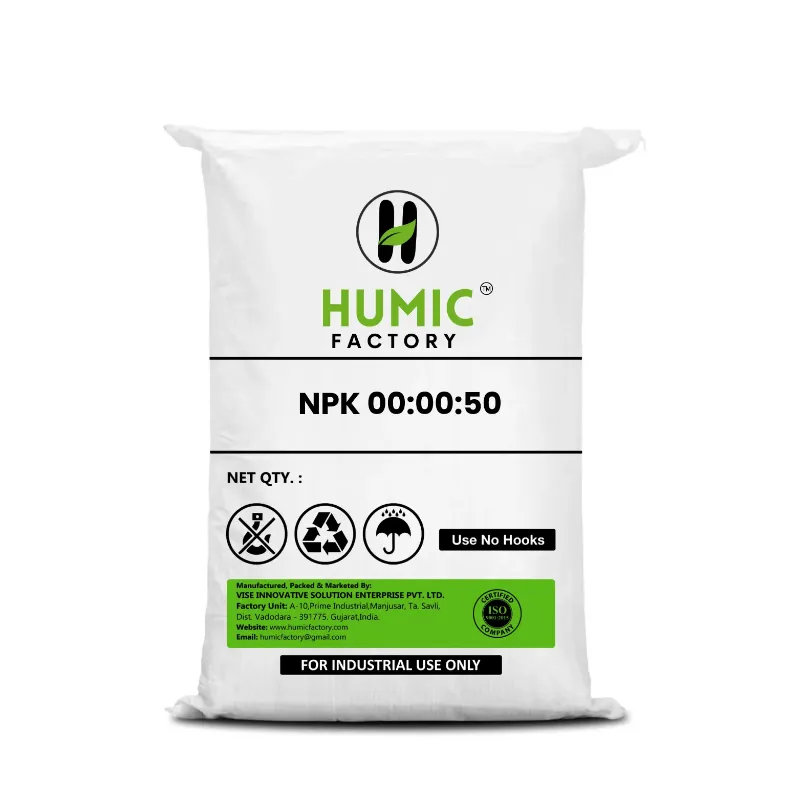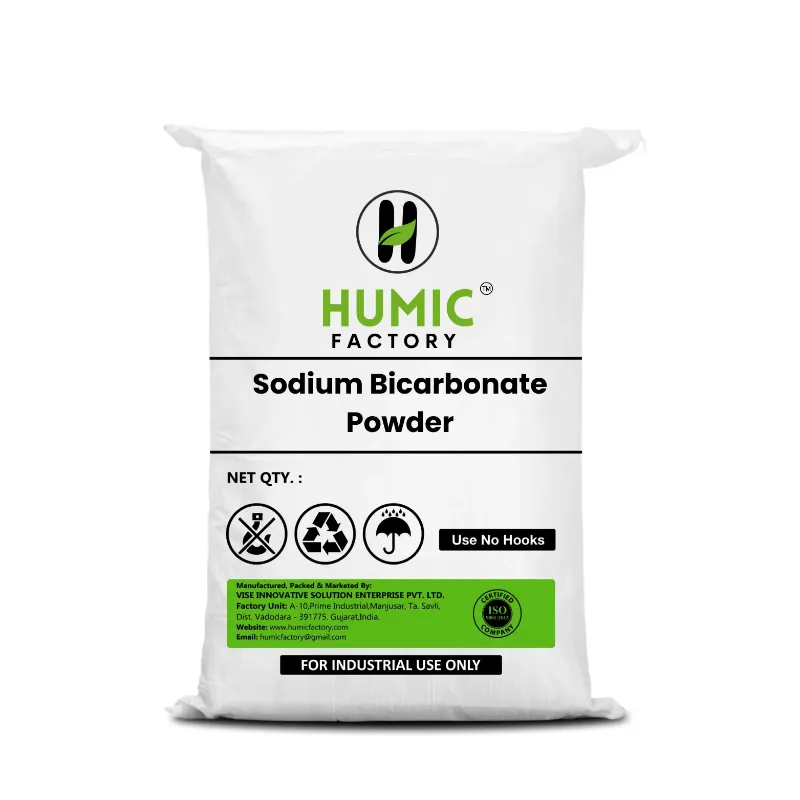Humic acid fertilizer has quickly become an ideal toolbox for farmers and gardeners looking to increase soil health and promote plant growth. The humic acid fertilizer price is often higher than traditional chemical fertilizers, but the benefit to you and your farm and soil in the long run may make it more worthwhile for you! Humic acid benefits your soil in many ways, which leads to better crops and yield. Humic acid improves soil structure, stimulates nutrient uptake and water availability, and improves root development—and improves soil efficiency, so you are using less (and needless) chemical fertilizers and long term lower input costs.
The worth in humic acid fertilizer is also beyond just the plant growth; it also benefits soil health over time. One of the things humic acid does is improve the water retention capacity of the soil, aeration, and microbial activity—all mechanics needed to maintain some location's soil fertility and to reduce soil erosion. Although the initial humic acid price seemed steep, as a farmer you are now looking at the return on investment through growing better-quality crops, reducing your fertilizer expenses, and improving your soil quality. For anyone who takes farming seriously and wants to pursue sustainability and better crop yields, using humic acid fertilizer is a smart investment that will pay off for you in the long run.
Introduction: Understanding the Role of Humic Acid in Modern Agriculture
Humic acid is playing to check off all the boxes related to our goals in agriculture, as it is a sustainable and viable method of improving soil health as well as plant health. Humic acid is organic matter that has deposed from plant and animal materials, and is a strong soil conditioner. Humic acid affects soil structure, promotes nutrient availability, and improves plant health. The role of humic acid is in sustainable agriculture is leading the debate on the benefits of organic soil amendment products, as we enhance soil fertility without often relying on chemical fertilizers.
Humic Acid Benefits in Agriculture
Humic acid has many benefits for agricultural purposes which include:
- Soil Fertility: Humic acid increases the cation exchange capacity (CEC) of soil, meaning that soil could retain essential nutrients and put those nutrients at their disposal in plant growth
- Water Retention: Increase ability of soil to retain water, which is important especially in drought conditions
- Microbial Activity: Positive influence of beneficial soil microbes to cycle nutrients, and benefit healthy soil food webs
- Soil Structure: Helps loosen compacted soil for roots to penetrate and also allows soil to be aerated more evenly
The Importance of Humic Acid in Soil Health
Humic acid is an important factor in improving the overall health of soil. It is a natural soil conditioner that can improve the physical, chemical, and biological properties of soil:
- Soil Aeration and Structure: Humic acid improves soil structure by binding with minerals, decreasing compaction, and improving soil aeration.
- Nutrient Availability: It allows essential minerals and nutrients such as nitrogen, phosphorus, or potassium to be more readily available to plants.
- Improved Soil Microbial Life: Humic acid provides a home for beneficial microbes, which increases soil fertility and increases the natural resistance to diseases and pests.
How Humic Acid Improves Plant Growth
Humic acid is a very important part of plant growth. That's accomplished when humic acid does the following for the plants:
- Stimulating Root Development: humic acid enhances root structure and growth by modifying the soil environment and ecologically increasing the availability of nutrients for the plant to use, thereby developing a more robust and healthy root structure.
- Enhancing Nutrient Uptake: humic acid improves nutrient uptake for the plant and assists in utilizing the available soil nutrients and growing for more vigorous growth or higher yield.
- Stress Tolerance: humic acid improves overall plant vigor which means that a plant can tolerate more environmental stressors like drought duration, salinity, and extremes of temperature.
Humic acid helps farmers by adding to his/her agricultural protocols for healthier, higher yielding crops through the use of sustainable agriculture practices for improved soil health while lowering the need for chemical fertilizers. Humic acid is a sorely needed and vital component to any sustainable agricultural system to help alleviate the inevitable nutrients and soil challenges that exist for soils and plants in farmed systems.
The True Cost of Soil Health: Is Humic Acid Fertilizer Worth the Price?
Humic acid fertilizer is becoming increasingly recognized as an important component of sustainable agriculture. However, many farming and gardening practitioners are still confused about whether the benefits justify the costs. Humic acid fertilizers, which are derived from organic substances, aim to improve soils in positive ways, including improving soil structure, improving plant growth, and increasing nutrient availability. Understanding the relative navigational cost of humic acid fertilizers is important in order to compare them to traditional chemical fertilizers as responsible agricultural decisions can be made.
Humic Acid Price Comparison with Traditional Fertilizers
In order to do a pricing comparison between humic acid fertilizers and with traditional fertilizers, the following variables must be compared:
- Application costs per unit of Fertilizer : Humic acid fertilizers typically have a higher upfront cost than synthetic fertilizers, but because they have long term benefits, this may be inconsequential.
- Nutrient efficiency: Humic acid fertilizer improves the nutrient holding capacity of the soils, making the nutrients more available to the plant and thus, would reduce the need for further applications.
- Application Timings: Humic acids fertilizers, on the whole , will have less applications than tradicional chemical fertilizers, therefore reducing costs over time.
Investment in Soil Health and Long-Term Returns
Humic acid fertilizers may require a bit more investment at initial purchase, but the savings in the future make it worth it! Humic acid will improve crop yield - that is not disputed! Additionally, humic acids will improve soil quality over time providing better soil structure, water holding capacity, and help to produce healthier plants with better disease resistance. Over time and upon each application, the crop yield will increase, and less of the other fertilizers will be required, thus saving you money nevertheless!
- Soil Health Improvement: Humic acid fertilizers use humic acids to regenerate soil, which improves soil nutrition and naturally improves soil structure.
- Less Preventative Chemicals: As humic acid fertilizers improve nutrient retention and microbial activity, the need for chemical fertilizers will diminish, which in itself equates to savings over time.
- More Crop Yield: The cumulative effect of improving soil and plant health provides better crop yield, and ultimately over time the better-crop health and yield will pay off the higher initial cost.
Cost vs. Benefit: Why Humic Acid Fertilizer is a Smart Investment
How to Evaluate and Choose the Right Humic Acid Fertilizer for Your Needs
Choosing the right humic acid fertilizer is crucial for ensuring your plants and crops receive the optimal benefits. Several factors need to be considered when evaluating and selecting a humic acid fertilizer to ensure its effectiveness and affordability.
- Evaluate the Specific Needs of Your Crops:Different crops have different nutrient needs. Vegetables may require a higher frequency of application for humic acid than perennials would. Identifying the specific needs of your crop is the first step of deciding on a fertilizer.
- Evaluate the Humic Acid Content: While there are many different brands of humic acid fertilizers, it is important to evaluate the humic acid solvent in the product. Often a higher level of concentration means there will be better nutrient uptake, better soil structure and better growth.
- Review the Product Formulation:There are different formulations for humic acid fertilizers; these can be granular, liquid, or powder. The right formulation will depend on your crop system and the way you are applying the fertilizer. Liquid humic acid for example is easier to apply while foliar feeding, granular formulations are clearly better if applied to the soil. Be sure to pick the best formulation for your application method.
- Seek Organic Certification:If you are practicing organic, you will also want to be sure that the humic acid fertilizers have been certified organic. This certification ensures that all the standards for organic agriculture have been met.
Best Value Humic Acid Fertilizer
When purchasing humic acid fertilizers, price is often the key determinant. But value is not always synonymous with the lowest price. Following are some key points to consider for assessing value:
- Quality Over Price:Value means you need to decide on quality over price to some extent. While saving money is nice, don’t compromise quality of humic acid products. High-quality humic acid fertilizers will contain a higher concentration of humic substances and will provide better soil benefits to improve agriculture as well as landscape and ornamental plants. In the long run, cheaper fertilizer products may cost you more because if you're buying inferior levels of quality, you may have poor performance in the long run, leading to more applications of those products.
- Return on Investment (ROI):While investing more in quality humic acid fertilizers requires an up-front price increase, it can lead to a higher ROI through increased yield, improved soil structure, less reliance on synthetic fertilizers, etc. In the long run, the benefits you receive may be greater than the savings you experienced in short-run to purchasing cheaper products.
- Compare Prices: Be sure to compare prices of fertilizers that are of equivalent quality humic acid. In some cases, a slightly higher price may yield better returns (in price longevity or effects).
Comparing Humic Acid Fertilizer Prices and Quality
Choosing the Right Fertilizer for Your Crops
Choosing the correct fertilizer is important to obtaining the best results. Here are some steps to take when selecting the best humic acid fertilizer for your crops:
- Evaluate Soil Health: Before purchasing humic acid fertilizer, consider testing the health of your soil, and nutrient profile to determine if a higher or lower humic acid fertilizer is warranted.
- Match Fertilizer with Crop Type: Different crops respond differently to humic acid. For example, root crops like carrots and potatoes may have a more beneficial response to humic acid fertilizers that are more actuator-type fertilizer that focuses on improving soil structure than a foliar-type fertilizer such as a humic acid foliar. Leafy vegetables have more of a strong response to a humic acid foliar fertilizer that focuses on nutrient absorption than a humic based actuator fertilizer that focuses on soil structure.
- Consider Growth Stage of Crops: If your crops are in their early stages then select a fertilizer which focuses on root development. If your crops are larger and better developed, select a product that contains humic acid fertilizer to promote overall plant growth and resiliency even as stress induced by environmental or other potential stressors are reduced
- Price vs. Performance: Compare the price of humic acid fertilizers and relate that price to performance. While not all humic acid fertilizers are created equal, some may be priced higher due to quality while others may cost less because of inferior quality and price. Higher quality humic acid fertilizers may have a higher cost, but the increase in yield, the improve soil health will make this hump significant for sustainability.
FAQs
Q1. What is humic acid fertilizer and how does it benefit crops?
Humic acid fertilizer is a soil amendment made from humus, which is the organic matter in soil. It improves nutrient uptake, enhances root development, and promotes overall plant health by improving soil structure and increasing microbial activity.
Q2. Why is humic acid fertilizer considered a good investment despite its price?
Although humic acid fertilizer may have a higher upfront cost, it provides long-term benefits such as increased crop yield, improved soil health, and reduced dependence on synthetic fertilizers. Over time, these benefits result in a higher return on investment (ROI).
Q3. How does humic acid fertilizer improve soil health over time?
Humic acid fertilizers enhance soil fertility by improving soil structure, increasing water retention, and boosting nutrient availability. They also stimulate microbial activity, which helps break down organic matter and releases essential nutrients for plant growth.
Q4. How does humic acid fertilizer price compare with chemical fertilizers?
Humic acid fertilizers may initially be more expensive than chemical fertilizers, but they offer long-term benefits such as better soil health, higher yields, and reduced reliance on synthetic chemicals, making them a cost-effective choice in the long run.
Q5. How often should I apply humic acid fertilizer for the best results?
The frequency of application depends on the crop type and soil conditions. Generally, humic acid fertilizers can be applied once or twice per growing season, with additional applications based on soil tests or specific crop needs.
Q6. Can I mix humic acid fertilizer with other fertilizers?
Yes, humic acid fertilizers can be mixed with other fertilizers. It enhances the effectiveness of chemical or organic fertilizers by improving nutrient uptake and soil conditions, ensuring better results when combined.
Q7. What are the long-term economic benefits of using humic acid fertilizer?
Over time, humic acid fertilizers improve soil health, leading to better crop yields and reduced need for chemical fertilizers. This results in cost savings, increased crop productivity, and a more sustainable farming system.
Conclusion: Investing in Your Land’s Future – Why Paying More Now Pays Off Later with Humic Acid Fertilizer
Using humic acid fertilizer is much more than a short-term expense; it is an investment in your soil, your future farming practices, and your land. It is true that the upfront cost of humic acid fertilizer might be higher than conventional fertilizers, but considering the effects of humic acid on soil and crops, long-term it will be a financial investment that pays off.
Humic acid improves your soil structure, enhances the nutrient absorption capabilities of your crops, and improves microbial activity, meaning your crops are healthier, yields are higher and reliance on chemical inputs is lower.
Most important: investing in humic acid fertilizer at this time means your land’s future productivity should be improved. What the increase in soil health means to you is, it will cause less erosion, improved moisture retention, and fertility which all impact developing healthy and productive crops whenever you need them, year after year. Additionally, humic acid also works to optimize the efficiency of other fertilizers you are using, so you will ultimately all use less synthetic fertilizer leading to reduced, overall chemical fertilizer inputs (savings) in the future. The upfront costs in humic acid fertilizer are much lower than the long-term costs providing more system productivity, sustainability, and cost savings, therefore making it a good investment into the future of your land.






